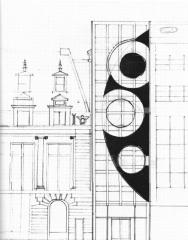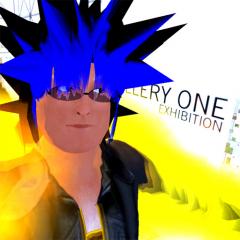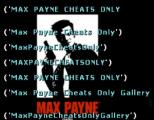 Proposal for MoMA
Proposal for MoMA
Just before Gordon Matta-Clark died in 1978 the Museum of Modern Art approved a proposal by him to cut into the façade of the original MoMA building before the first renovation and expansion of the building.
The piece was never executed. Gordon’s proposal was a bit of one-upsmanship on a certain level. Christo had proposed in the 1960’s to wrap the façade of MoMA but it remained a proposal. Cutting into the façade of MoMA was a lot more destructive than a gentle wrapping in canvas tarps.
reviews
Gordon Matta-Clark, Doug Aitken and MoMA
gh_news_015
-gh_news_015
Hello Korea # 5: There's more!



Can't help it: In my growing Korea image collection those 9-11s keep emerging. (and all that started with the Hyundai Department Store during the 5th anniversary)
Most noteworthy a wall paper featured at Seoul's Ssamzie Market, in an art/fashion show entitled WAKE UP ANDY WARHOL. This piece shows WTC jumpers as a decorative tile pattern, each tagged with an Andy Warhol siganture.
....
A NetBehaviourist joins Flickr
The other day I joined Flickr. Here is an URL netbehaviourist to my account, which will fill up as time goes by.

The last few days have been extremely valuable for me. Time has actually slowed down, making life currently a little calmer. Although, I still do have emails to write and send, as well as various works to view and review for Furtherfield, to be ready for Janurary 2007. But, thankfully, Christmas is here. As many of you may be aware of by now. I am not a religious sort, but this is one time of the year when I am more tolerant towards those who celebrate it. Because this time of year offers someone like myself a chance to spend more time viewing different aspects of online culture, in a relaxed manner. Plus, I can still do other things away from the computer, like go to parties and cook some decent quality food.
Lost in the GRID - My so-called Second Life
 second lifeFor the past three weeks, this thing called Second Life has consumed my time, my wallet, and my mindspace. The question is: why? Is it because there is a tremendous amount of speculative activity on the SL Grid regarding the potential of money to be made in selling aether> Is it the potential of having unrelenting avatar sex with humans, furries, centaurs, elves, or mecha? Is it the fact that within three months, I have met the strangest asemblage of people, been in bizarre and compromising stiuations, slammed a cycle with a girl on back into the side of a mountain at 180 KPH, or blew off a nuke that crashed my grid?
second lifeFor the past three weeks, this thing called Second Life has consumed my time, my wallet, and my mindspace. The question is: why? Is it because there is a tremendous amount of speculative activity on the SL Grid regarding the potential of money to be made in selling aether> Is it the potential of having unrelenting avatar sex with humans, furries, centaurs, elves, or mecha? Is it the fact that within three months, I have met the strangest asemblage of people, been in bizarre and compromising stiuations, slammed a cycle with a girl on back into the side of a mountain at 180 KPH, or blew off a nuke that crashed my grid?
Talk: "Interfunktionen" and "Avalanche" discussed at MoMA panel
Interfunktionen and Avalanche at the Modern
After the sardine lecture at Storefront (see last post), there was more chat about the legendary little magazines of the 1970s. December 10th the Museum of Modern Art convened called “Experimental Magazines and the International Avant-Gardes, 1945–1975." The panel discussion, said moderator David Little, coincides with the “Eye on Europe” show and the “American Fantastica” exhibition. So it may have. But the weight of the panel was ‘70s. Edward Sullivan seemed misplaced speaking generally about the landscape of Latin American modernist journals, so I am going to ignore his remarks. The stars of the panel for me were Benjamin Buchloh speaking on the avant garde German publication Interfunktionen, and Willoughby Sharp and Liza Bear, co-editors of Avalanche, the NYC magazine of new art published in the early 1970s.
Cracking Up Talk -- On the Big Little
I am stuffed into the Storefront for Art and Architecture on December 9th with a subway car-load of smart, good-looking white people listening to three gods of October talking at the “Clip/Stamp/Fold Radical Architecture of Little Magazines 196X-197X” exhibition. Actually, as the exhibition, curated by Beatriz Colomina and a team from Princeton (see clipstampfold.com). It’s Rosalind Krauss, Yve-Alain Bois and Hal Foster.
games: a subculture or an elitist cheat?
 Max Payne Cheat
Max Payne Cheat
As I was participating to Art+ Games for my biggest pleasure last week end, invited by Yves Bernard from imal.org, i intended to the talk given by Dirk from Jodi.org
It was really interesting to listen to him talking about their last project "Max Payne cheats only" http://maxpaynecheatsonly.jodi.org/ saying that it is a readymade and that everything is in the game.
YVES KLEIN @ The Centre Pompidou / Musée National d'Art Moderne, Paris
YVES KLEIN
CORPS, COULEUR, IMMATÉRIEL
5 OCT. 06 - 5 FEB. 07
The Centre Pompidou / Musée National d'Art Moderne, Paris
Long live the immaterial!
-Yves Klein, The Chelsea Hotel Manifesto
Yves Klein is for me, and many others, the most important French artist after Henri Matisse. This may sound somewhat appalling to some, as Klein enjoyed only a very concise, but invigorating, seven-year artistic career. But I will clarify this controversial judgment by pointing out his historic relevance to our era of digital culture. The emphasis here will be on Klein’s conceptual articulation of the spatial and the ephemeral/immaterial in relationship to our current actual state of virtuality. Indeed the subtitle of the exhibition, CORPS, COULEUR, IMMATÉRIEL (Body, Color, Immaterial), itself brings out the salient viractual (*1) aspects of Klein's art.